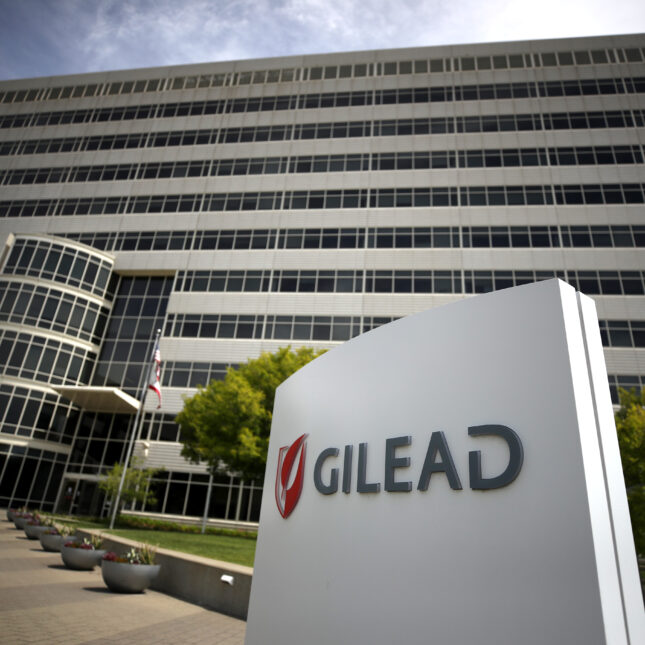
Gilead Sciences, a pharma company that dominates the market for HIV treatments, agreed in June to settle a case in federal court for $40 million that had been brought by 2,625 people living with HIV. But as a similar and far larger case looms in California courts, right-leaning, big-business-can-do-no-wrong opinion columnists and editorial boards are claiming the lawsuit threatens to destroy the pharmaceutical industry’s ability to innovate.
That’s utter nonsense. Their alarmism reminds me of the critics of early AIDS activism, when ACT UP was accused of scaring pharma companies away from AIDS research. But the opposite occurred — more companies jumped in as the drug approval process sped up.
The story behind these cases starts in 2001, when Gilead was simultaneously developing two forms of tenofovir — tenofovir disoproxil fumarate (TDF) and tenofovir alafenamide fumarate (TAF) — as treatments for HIV. The Food and Drug Administration approved TDF that year, but the company was hopeful that TAF, which was equally effective at far smaller doses, would be less toxic. The company told investors they liked what they were seeing in TAF’s early studies. Doctors, people living with HIV, and AIDS activists were equally excited.
TAF was on a schedule to be approved in 2008. But in 2004, Gilead abruptly pulled the plug on it, saying in a press release that it didn’t have “a profile that differentiates it to an extent that supports its continued development.”
Animal toxicology studies showed early on that TDF caused kidney and bone damage. But by 2008, horror stories of more widespread harm were emerging: young people needing double hip replacements, and deaths from kidney failure. TDF was always used in combination with other antiviral medicines, and most of those regimens included a booster that helped increase the blood levels of protease inhibitors, the powerful class of drugs that transformed HIV from a death sentence to a manageable disease in the late 1990s. But these boosters also increased the blood levels of TDF — as well as its toxicities.
I experienced this firsthand. Having been diagnosed with what was then called AIDS-related complex in 1985, when I was only 24 years old, I’m one of the lucky few who have survived into my sixties by trying various combinations of drugs, mostly to find combinations that worked but also to avoid the older, more toxic drugs. I started TDF in 2003 but switched away from it in 2009 after being diagnosed with osteopenia, a worrisome loss of bone density.
A year after my switch, TAF was back in the news. Gilead had relaunched its development, slow-walking each study and FDA-related milestone so it would come to the market shortly before TDF’s patents expired in 2018. But as this maddeningly glacial process played out, Gilead never bothered to adjust the dose of TDF to account for boosted regimens, even as it lowered TAF’s dose by 60% in the boosted regimens used in clinical trials comparing it to TDF, assuring that TAF would look far less toxic.
Gilead also commissioned a study that used statistical modeling to predict how many people would be harmed if they continued taking TDF-based regimens. Based on data from the prior decade of TDF-related toxicities, it estimated there would be an additional 16,000 excess deaths and 150,000 excess kidney and bone injuries over a nine-year period.
Think about that for a minute: Gilead used the previous decade of TDF-related harm — harm it could have prevented with a dose adjustment or a speedier launch of TAF — to market a drug that had once been on a development schedule for approval in 2008 but wasn’t brought before the FDA until 2014.
Within three years of TAF’s approval in 2015, 80% of individuals who had been taking TDF-based regimens switched to TAF-based regimens — one of the most successful patent-hop examples in pharma history.
Fast forward to 2019, when I became the lead plaintiff in a federal antitrust case, initially called Staley v. Gilead Sciences Inc., which accused the company of colluding with other pharma companies to keep generic drugs out of the HIV treatment market. During the discovery process, we found Gilead’s smoking gun emails and spreadsheets from 2003 showing the real reason behind the delay in bringing TAF to market: wait until TDF reached the end of its patent life, then switch patients to TAF. This was one of the clearest paper trails of patent hopping — preempting generic competition by marketing a slightly altered version of a branded drug — ever seen, so clear that The New York Times turned the documents into a front-page story.
None of these damning details appear in the editorials slamming the recent legal decisions allowing the California case brought by 24,000 people living with HIV to proceed, all of whom were harmed by taking TDF. The Wall Street Journal’s editorial board has written about it twice, stripping it down to an alarming-sounding “crazy new tort” advanced by “Golden State’s plaintiff-friendly courts,” where any company could be penalized simply based on when they bring a product to market. Forbes ran a similar op-ed, saying the case “could quash future cures.”
By stripping this case of its patent hopping, as if the Times’s front-page story didn’t exist, these editorialists swap in scary-sounding generalizations about all product development: Why innovate if you can be sued for how slowly you bring an innovation to market?
If their scare campaigns work, then Gilead’s unique and rare form of patent hopping, where the hop’s timeline remains unchanged even as evidence mounts of harm to thousands of people, might become a new precedent. Pharma will be free to repeat the behavior.
When pharmaceutical companies do good work, they should be able to turn a decent profit. But dragging their feet to bring a safer treatment to market while thousands of people are taking a harmful one isn’t doing good work. In California, and across the nation, Gilead should be held accountable for its uniquely harmful patent hop.
Peter Staley is a co-founder of PrEP4All, an advocacy organization promoting a national HIV prevention plan.





